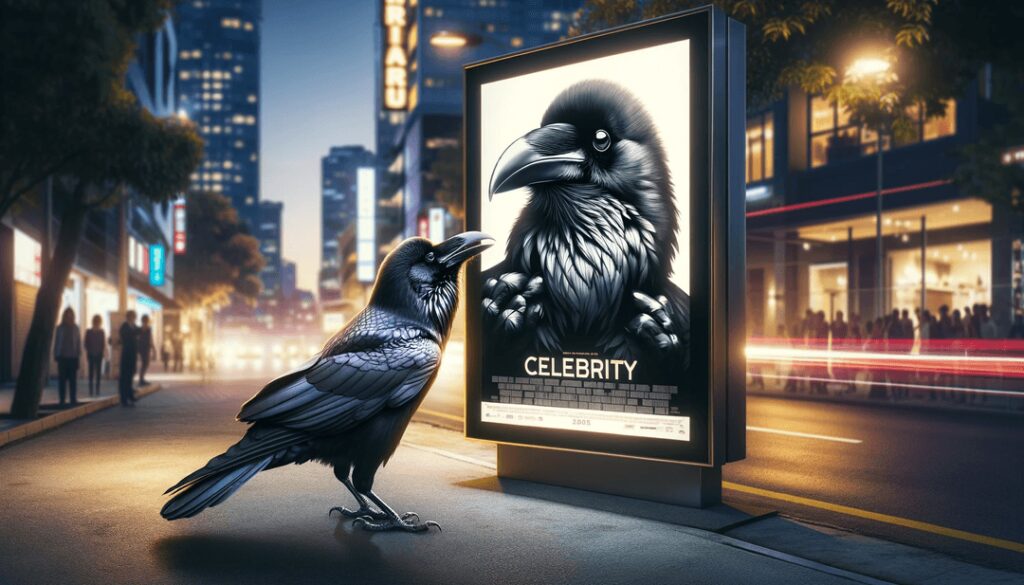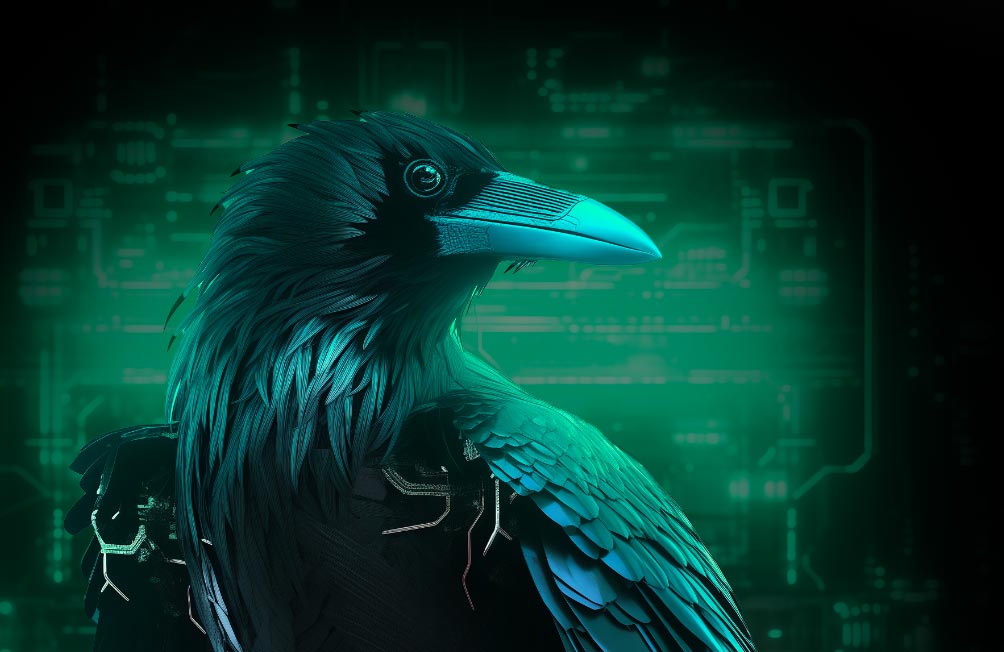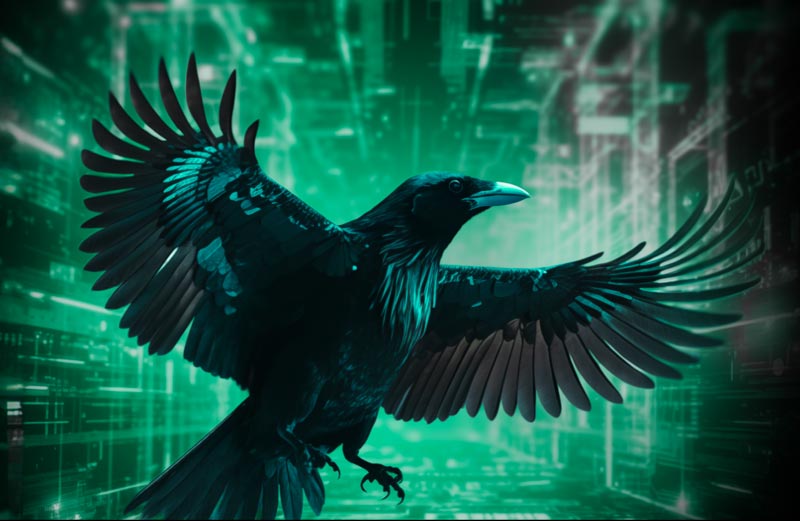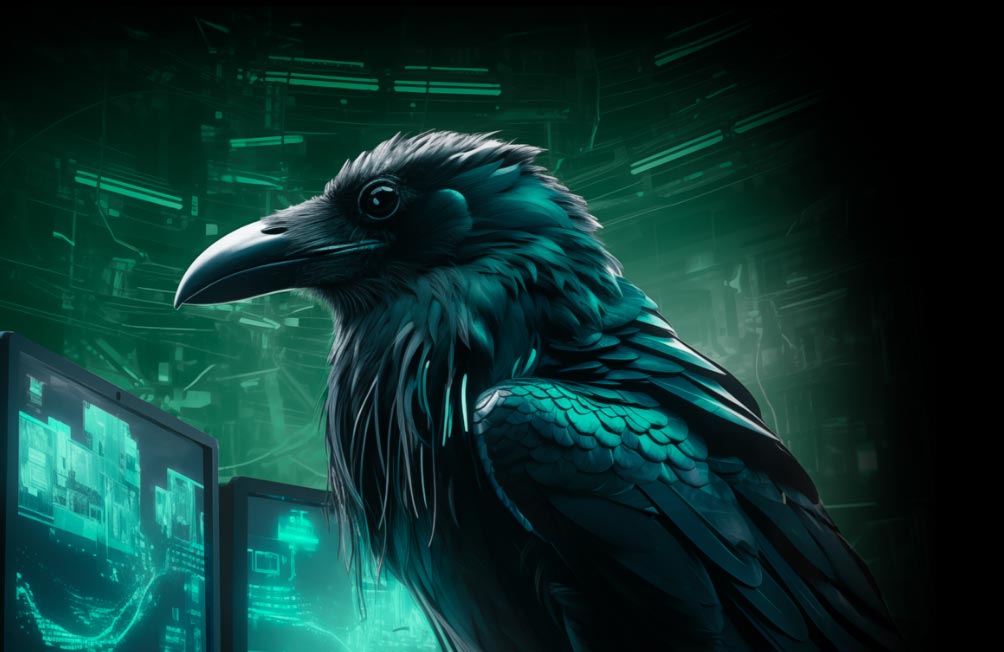The Top 9 Outlandish Narratives in Entertainment
People will suspend their disbelief for a film, stage play, or television show, but not so much for false narratives.
Blackbird.AI

On the flip side of the entertainment industry’s glitz, glamour, awards shows, and gated mansions is a target even larger than the famed Hollywood sign. With new ideas, creativity, and unconventional perspectives come controversy and narrative attacks caused by misinformation and disinformation.
Below are some of the more notable and outlandish entertainment narratives:
Artificial Art: Pixar/Disney Posters
The advancement of (and easy access to) AI tools has brought out the creative poster artist in some – recently evident with the creation of Pixar-style posters with Microsoft’s Bing AI imaging tool. This caused a stir when legitimate-looking promotional material, including one that appeared to promote a film about the Nirvana frontman, appeared on the Internet. Microsoft adjusted the Bing Imaging tool to prevent copyright infringement.
Scandals and International Intrigue: The Sony Pictures Hack
In 2014, Sony Pictures was the victim of a malinformation attack by a hacking group called “Guardians of Peace.” The cyberattack revealed sensitive internal data, documents, and exchanges. Leaked items included data about employees and their families, unreleased films and scripts, and trade secrets. Adding salt to the cyber wound, embarrassing internal email exchanges, which involved some of the biggest names in entertainment and politics, were brought to light. Their publication by the mainstream press amplified the emails (with their senders and targets) and became the story.
While this event was attributed to North Korea and their opposition to an upcoming film called The Interview (a dark comedy about two journalists who plan to assassinate the North Korean leader), there are still questions and conspiracy theories about the actors and motive behind the attack. Terroristic threats from the hackers led to theaters canceling their showings, which prompted Sony to pull the film’s Christmas Day release.
The attack was “the most serious cyberattack ever made against U.S. interests.” It resulted in reputational damage, millions in investigative and repair costs, and lawsuits against the company.
LEARN MORE: What Is A Narrative Attack?
A Conspiracy-Surrounded Courtship
Taylor Swift and Travis Kelce’s still-new courtship has been subject to public fascination and rumors. Among the rumors: the relationship is a PR stunt to sell jerseys, spark young girls’ interest in football, and boost ratings of NFL games. Additionally, when coupled with Ms. Swift’s support of progressive causes and political candidates, some cast suspicion on Mr. Kelce’s promotional relationship with two institutions that triggered outrage among right-wing cohorts: Pfizer and Bud Light.
Busting the Ghostbusters Premiere
The 2016 reboot of the Ghostbusters franchise fell victim to vicious social media attacks, which included false information about major changes to plot points and the characters, with leaked clips of (unfinished) special effects and early versions of the script.
In a departure from the original films, the 2016 version featured an all-female team, which fueled sexist and racist attacks against the film, its creators, and the cast – in particular, actress Leslie Jones. Filmmakers were accused of “pandering,” and hashtags such as #NoGhostbusters and #BoycottGhostbusters helped amplify the negative messages. In fact, according to one Twitter (now X) user, “Ghostbusters 2016 is a declaration of a culture war.”
While the quality of any film is subjective, the mixed critical reviews and disappointing box office performance can be attributed to the harm to the brand’s public perception caused by the online attacks.
The Rise of Skywalker and Reddit Rumors
In 2019, The Rise of Skywalker’s premiere was marred by a misinformation attack that began on social media. The attack began with false “leaks” shared on social media, and interviews and public comments by those involved in the film were taken out of context. This fueled speculation of studio interference, conspiracy theories, and overall fan disappointment.
Confirmation bias also helped fuel the false narrative, with forum members upvoting and sharing posts that aligned with their negative beliefs about the film. The rumor that there was a better, more fan-friendly three-hour film cut sparked the hashtag #ReleasetheJJCut.
Another cause of outrage was the shortened screen time of Kelly Marie Tran, who reprised the role of Rose Tico. The actress had been subjected to racist attacks after her appearance in 2017’s The Last Jedi, and her short screen time was attributed to filmmakers trying to appease online trolls.
The false narratives and fan hostility led to the harassment of those involved in the film and are suspected to have contributed to mixed critical reviews and a lower-than-expected box office performance.
Powerful Backlash Around The Rings of Power
In 2022, Amazon delayed reviews to its video streaming platform to combat disinformation campaigns in the form of review bombing fake ratings. This attack was spurred by review bombs of The Rings of Power, a prequel to the Lord of the Rings series. J.R.R. Tolkien purists took issue with many factors, including what they consider “woke” casting of non-white actors as elves and dwarves. There were also misogynistic attacks and accusations that the series was too deviated from Tolkien’s original intentions. This resulted in many negative (fake) reviews, with the unusual voting activity readily apparent.
One example is the ratings site Rotten Tomatoes. The Rings of Power had an average critic rating of 84% for the series, with an average audience score of 3%%, reflecting an unusually wide disparity between the two types of ratings. Additionally, Amazon’s IMDB showed a 6.2/10 rating and 17,500 one-star ratings (25% of the ratings), which also indicated abnormalities.
In addition to delaying reviews for three days to determine if they were genuine or part of the review bombing, Amazon prevented anyone from posting a review unless they watched the show.
Disinformation campaigns targeting the entertainment industry can be designed to spread false or misleading information about movies, actors, directors, and various aspects of the industry.
Which Witch Narrative was Which?
In 1999, a horror film called The Blair Witch Project was a disinformation bonanza, thanks to intentional misinformation courtesy of the filmmakers and theories from moviegoers. The film chronicled three student filmmakers (Heather Donahue, Michael Williams, and Joshua Leonard) who traveled to the Black Hills near Burkittsville, Maryland, to film a documentary about the local legend of the Blair Witch. The film, presented as “found footage,” depicts the group’s collective fear as they become lost in the woods and their descent into paranoia as the Blair Witch seemingly stalks them.
Many elements contributed to the fabrications surrounding the film’s release, including:
Missing posters and websites: Fake missing posters for the film’s characters were plastered around cities nationwide. A website detailing the “disappearance” of the filmmakers was also added to the pre-release hype. These tactics made people question whether the movie was a found footage of real events or simply part of a creative promotion.
The format: Shaky camerawork, unscripted dialogue, and overall rough edges gave the film the gritty realism of a genuine documentary.
Media reporting: Most news outlets weren’t sure how to describe the film, so the film was treated as a found-footage documentary, which helped fuel confusion and speculation.
Online forums: In 1999, online discussion forums and chat rooms were in their infancy, and fans took to these new gathering places for in-depth discussions and debates around the film’s authenticity, analyzing every minute detail and looking for clues that could prove the Blair Witch’s existence. This active engagement kept the speculation alive well past the film’s release.
The truth? The film was just a film. While undergraduates at the University of Central Florida, the Blair Witch Project’s creators, Daniel Myrick and Eduardo Sánchez, discovered something. They realized that they considered documentaries much scarier than horror films because horror films were “wedded to their conventions, giving them an inevitable predictability.” And this led to the premise of the Blair Witch Project and its marketing campaign.
Beyonce’s “Bump-gate”
The public’s fascination with celebrities is a source of endless conversation – with the conversation around Beyonce and her pregnancies taking a bizarre turn.
Rumors first surfaced in 2011, accusing Beyonce of faking her pregnancy and using a prosthetic bump to fool the public. Another narrative claimed that she had employed a surrogate. Beyonce personally addressed the rumors, criticizing them as “crazy” and asking, “Where did they come up with this?” The rumors resurfaced during her second pregnancy. The same narrative of a prosthetic bump made the rounds, aided by claims that the bump’s size and shape seemed unrealistic. This time, Beyonce responded with seemingly irrefutable proof: a semi-nude pregnancy photo on Instagram (which still inspired speculation around potential hidden messages).
Each rumor was put to rest by the birth announcements of Blue Ivy in January 2012 and twins Sir Carter and Rumi in June 2017.
Where did the rumors come from? One point of origin was an Australian television appearance where Beyonce’s midsection appeared to “deflate” when she sat down. Disinformation tactics included misinterpreting images and videos (including close-ups and manipulated footage), cherry-picking out-of-context information, and leveraging social media, gossip blogs, and other unreliable sources to amplify the false messaging.
Rumors of Resurrection
The untimely deaths of two influential hip-hop artists sparked an avalanche of conspiracy theories that persist today – including a pervasive rumor that they faked their deaths.
In September 1996, Tupac Shakur was gunned down in Las Vegas after a Mike Tyson boxing match. A few months later, East Coast artist Biggie Smalls (Christopher George Latore Wallace, a.k.a The Notorious B.I.G) met a similar demise in Los Angeles while leaving a party in March 1997. While each crime was highly publicized, with the facts reported by responsible news outlets, false narratives quickly took shape.
But why? One root cause is the psychology of fans. The rumors around Tupac and Biggie aren’t new – this speculation also surrounded icons such as Elvis Presley, Paul Walker, Kurt Cobain, Jim Morrison, and even Amelia Earhart. There is a comfort factor for fans in thinking their idol will resurface one day. Additional factors included:
Cryptic Long Lyrics: Tupac and Biggie were gifted storytellers, with themes of death and resurrection incorporated into their music. Fans interpreted song lyrics as foreshadowing and evidence of secret plans and fakery.
The Circumstances: Both artists were young and at the peak of their respective careers. The cases remained unsolved for decades; the lack of definitive answers and closure created room for speculation.
Unverified Sightings: Like Elvis, there have been numerous reported sightings of Tupac and Biggie, with grainy, fabricated, and manipulated images presented as proof of life. While these claims are demonstrably false and continually debunked, they still fuel rumors.
Conspiracy theories surround these tragedies via unreliable “news” sources, social media platforms, and vague, offhand comments by celebrities.
Here are some broader examples of disinformation campaigns that have impacted the entertainment industry:
Fake Celebrity Feuds: Disinformation may create fictitious feuds between celebrities, claiming they are in conflict when, in reality, they are not. These feuds are often used to generate media attention and fan engagement.
Bogus Celebrity Deaths: False reports of a celebrity’s death can spread rapidly on social media. These hoaxes can cause fan panic and even lead to condolences from other celebrities. Some notable instances include false reports about the deaths of actors like Morgan Freeman and Jackie Chan.
Fabricated Scandals: Disinformation campaigns can invent scandals involving well-known figures in the entertainment industry, such as actors, musicians, or directors. These scandals may include allegations of illegal activities or immoral behavior.
False Award Show Results: Disinformation can circulate fake results for awards like the Oscars or Grammys, claiming that certain artists or films won awards when they did not.
Manipulated Social Media Accounts: Impersonation or hacked social media accounts of celebrities can be used to spread false information or make controversial statements in their name.
Fake Interviews and Quotes: Disinformation campaigns may create fake interviews or quotes attributed to celebrities. These fabricated statements can be used to manipulate public opinion or generate outrage.
Fake Movie Releases: Disinformation may involve spreading rumors about the release of a highly anticipated movie, claiming it’s coming out sooner or later than the actual release date. This can generate excitement or disappointment among fans.
False Casting Rumors: Disinformation campaigns can create fake casting announcements for major films, often involving popular actors or actresses who are said to be joining a project when they are not.
Fake Controversies: False controversies can be manufactured around a film, its cast, or its creators. These controversies are often based on fabricated statements or actions to generate negative publicity.
Manipulated Box Office Numbers: Some disinformation campaigns aim to manipulate box office figures by spreading false information about a movie’s financial success or failure. This can affect public perception and investment decisions.
Misleading Trailers and Teasers: Disinformation may involve creating fake movie trailers or teasers, which can misrepresent the film’s content or lead to false expectations.
Political Manipulation: In certain cases, disinformation campaigns target films with political agendas. They may spread false information about a film’s political bias or affiliations to influence public opinion.
Conspiracy Theories: Conspiracies related to the film industry can include claims of secret societies, hidden agendas, or alleged connections to real-world events. These theories can be entirely baseless.
Plagiarism Accusations: False accusations of plagiarism or copyright infringement can harm the reputation of filmmakers and studios. Disinformation may falsely claim that a popular film was stolen from an obscure source.
Fake Film Festivals and Awards: Disinformation campaigns can invent fake film festivals or award ceremonies with fabricated accolades to promote non-existent movies or actors.
Fake Album Releases: Musicians have faced disinformation campaigns claiming they are releasing new albums or collaborating with other artists when no such projects exist.
Hoaxes about Movie Endings: Disinformation sometimes involves spreading fake endings or plot twists for movies, either to generate curiosity or confusion.
Manipulated Reviews and Ratings: Fake reviews and ratings can be posted online to boost or undermine the success of a film artificially.
These disinformation campaigns can lead to public confusion, harm the reputation of individuals and studios, and impact box office performance.
A narrative attack can happen to any organization, institution, or person. A solid offense is the best defense to maintaining your brand’s reputation – to learn more about Blackbird.AI and how we help defend against narrative attacks, book your narrative threat and risk analysis today.
About Blackbird.AI
BLACKBIRD.AI protects organizations from narrative attacks created by misinformation and disinformation that cause financial and reputational harm. Our AI-driven Narrative Intelligence Platform – identifies key narratives that impact your organization/industry, the influence behind them, the networks they touch, the anomalous behavior that scales them, and the cohorts and communities that connect them. This information enables organizations to proactively understand narrative threats as they scale and become harmful for better strategic decision-making. A diverse team of AI experts, threat intelligence analysts, and national security professionals founded Blackbird.AI to defend information integrity and fight a new class of narrative threats. Learn more at Blackbird.AI.



